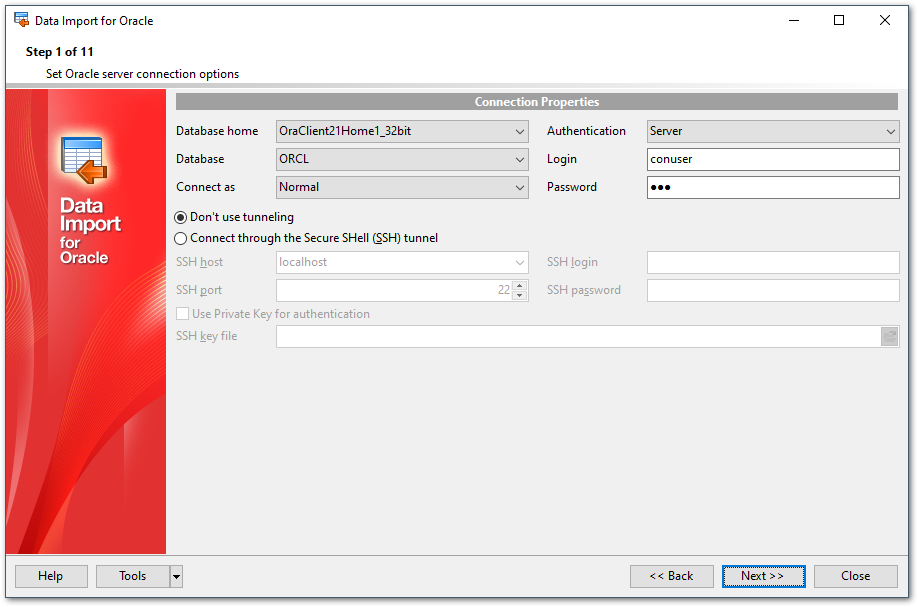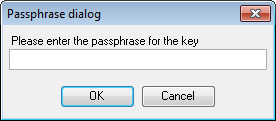Online Documentation for Data Import for Oracle
Step 1 - Setting connection properties
At this step you should specify necessary settings to establish connection to the target Oracle database.

Connection settings
Database Home
Specify your Oracle Home storage for this connection.
Connect as
Select the type of connection to be established: Normal (by default), SYSDBA, SYSOPER.
After that it is necessary to specify the database you are going to work with: type in the database name in the Database field or select one in the drop-down list (the drop-down list is only available if more than one Oracle database are registered in the TNS file).
Note: If no database are registered in Oracle Client (DB list is empty in this case), then you need to add registration info manually.
В поле Authentication задается способ идентификации пользователя на сервере. Будет ли программа распознавать его по доменному имени и паролю - Windows или же по его персональным имени и паролю на сервере - Server.
If you are using the EMS SQL Management Studio for Oracle version of Data Import for Oracle then the Select registered database button is available. Click this button to pick a database already registered in the EMS SQL Management Studio in the Select Host or Database dialog.
Please note that you need to have sufficient privileges to be able to write to the destination database on Oracle server.
Tunneling settings
To setup the connection via SSH tunnel, input the following values in the corresponding fields:
- SSH host is the name of the host (IP address) where SSH server is running
- SSH port indicates the port where SSH server is activated (default is "22")
- SSH login stands for the user on the machine where SSH server is running (Note: it is a Linux/Windows user, not a user of Oracle server)
- SSH password is the Linux/Windows user password
![]() Use Private Key for authentication
Use Private Key for authentication
If the SSH encryption is enabled on the SSH server, a user can generate a pair of cryptographic keys (the Private key and the Public key). The Public key is placed on the SSH server, and the Private key is the part you keep secret inside a secure box that can only be opened with the correct passphrase (or an empty string as the passphrase). When you wish to access the remote system, you open the secure box with your passphrase (if any), and use the private key to authenticate yourself with the Public key on the remote Linux computer.
SSH Key file
Specify the location (the secure box) of the Private key file on your local machine.
Supported Private Key file formats are:
OpenSSH
Putty
SSH.com
Note that you need to trust your local machine not to scrape your passphrase or a copy of your Private key file while it is out of its secure box.

NOTE: The Tools button gets access to saving/loading import templates or adjusting program Preferences.
When you are done, press the Next button to proceed to the next step.



































































